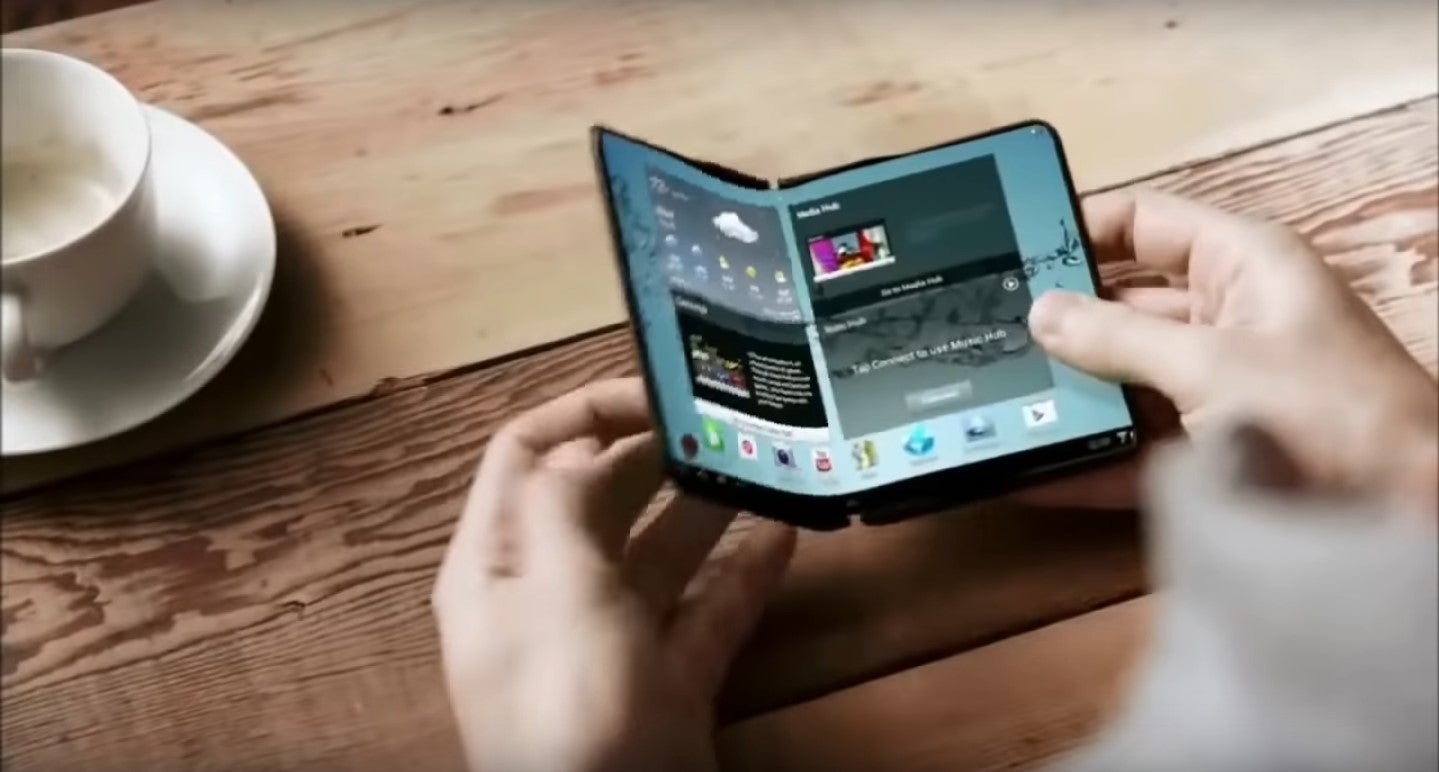
Samsung is widely expected to unveil its foldable phone tomorrow at the Samsung Developer Conference in San Francisco.
We don’t yet know its name, but it is expected to be named the Galaxy X or Galaxy F. There are also no pictures of the phone, but many expect it to have a 7″ AMOLED screen that can fold in half.

Access deeper industry intelligence
Experience unmatched clarity with a single platform that combines unique data, AI, and human expertise.
Yesterday the South Korean company posted pictures of the folded Samsung logo on social media, all but confirming the folding phone’s upcoming reveal.

Understandably, there has been a lot of hype around the Samsung Galaxy X. If Samsung gets it right, it could add a completely new dimension to the smartphone market – one in which Samsung would have a notable headstart.
The advantages of a foldable phone
From a hardware point of view, it offers the obvious advantage of the extra screen size of a tablet but the portability of a mobile phone.

US Tariffs are shifting - will you react or anticipate?
Don’t let policy changes catch you off guard. Stay proactive with real-time data and expert analysis.
By GlobalDataReplacing glass with several layers of flexible plastic film should also make it more resistant to breaks. The larger size also means a bigger, also folding battery to let users enjoy the extended screen for longer.
But if Samsung’s foldable phone is to justify its existence – and it’s rumoured £1,000-£2,000 price tag – it must ensure that it provides value to the user.
“Samsung has been teasing the technology for a long time, but not the use case,” explains Avi Greengart, consumer platforms & devices research director at GlobalData.
“Every new form factor and display technology has tradeoffs, so Samsung needs to come up with a compelling reason to put up with the inevitable drawbacks.”
Samsung foldable phone: Potential drawbacks
One of the drawbacks could be wear and tear created by daily, repeated folding of the screen over time – although at this point this is speculation from existing folding screen technology.
Another potential drawback could be the compatibility of existing apps with the folding screen. How would a Facebook video respond to the phone when unfolded mid-play, for example?
This potential downside also has the opportunity to be the phone’s greatest strengths. Unique software that responds intuitively to the folding design has the potential to revolutionise how users interact with their phones.
Vice chairman and CEO of Samsung Electronics Kwon Oh-hyun has previously explained that this is the company’s focus.
“When we deliver a foldable phone, it has to be really meaningful to our customer,” he recently told CNET. “If the user experience is not up to my standard, I don’t want to deliver those kinds of products.”
Software not a “traditional area of strength” for Samsung
Anonymous sources from Samsung have echoed this sentiment and it is something that Greengart says is crucial to the phone’s success.
“If a folding phone is going to succeed, it will need unique and customised apps,” he says, adding that while software is not an area of “traditional strength” for the company, it does have a “good track record” when it comes to supporting its unique software with its own hardware.
“For example, pulling out the Note’s S Pen immediately launches a note-taking app, and Samsung’s calendar app takes advantage of the phone’s additional screen real estate with more useful information in the monthly view,” he explains.
Samsung has reportedly been in talks with Netflix and YouTube about ways to optimise video content on a folding screen.
Meanwhile, US startup The Royale Corporation beat Samsung by a week to unveil the world’s first folding phone, with the FlexPai.
Apple is also reportedly working on a foldable iPhone for a 2020 release.
Read more: What can we expect from the smartphone of the future?







